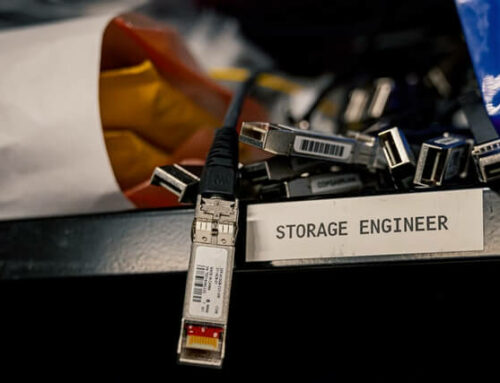Written by: Ahmed Abdalla, Solutions Architect at Adapture
What is “Bimodal” IT?
Gartner originally announced “Bimodal IT” in 2014 as a “new” approach to IT. There are many available interpretations to this definition, and similarly a number of reactions to those interpretations. Gartner specifically defines Bimodal IT as, “the practice of managing two separate but coherent styles of work: one focused on predictability; the other on exploration.”
Many blogs point out, accurately, that the idea of two different operating modes in the IT environment is not a new thing; it has been around in varying forms throughout the years. While that fact leads some reviewers to dismiss the notion of bimodal IT at face value, I believe that the details of Gartner’s proposal requires a more detailed analysis. Fundamentally, I disagree with the simplistic stance that is proposed by bimodal IT, but the strategy requires a nuanced interpretation.
At its core, bimodal IT is simply splitting workloads and their underlying infrastructures into two distinct buckets: 1) the “reliable,” or slow, bucket for traditional workloads that must be available for long periods of time and are driven by low operational costs, and 2) the “agile” bucket for workloads that must be deployed and managed quickly. One interpretation of this could be a codification of shadow IT. In this interpretation, traditional IT (the stodgy IT business operations that don’t respond fast enough for some lines of business), is pitted against the agility of public cloud services that businesses can procure with a credit card. Another interpretation of this definition could be seen as IT operations vs. devops, where the former is responsible for keeping the servers up, and developers automate provisioning and deployment independent of the underlying infrastructure.
Within Gartner’s definition, it is pointed out that both models must drive significant value and neither are static. In modern business where IT infrastructure is critical to prolonged growth, these two points are fundamentally essential. Any static IT organization, whether “reliable” or “agile”, is a failing one.
Some reviewers of the bimodal IT model claim Gartner has given up on traditional IT infrastructure, deeming it too slow to keep up with the pace of the market. A quick internet search will lead to any number of blog posts and articles extolling the virtues or detailing failings of the model. At its core, I believe that the Gartner approach neither supports nor assaults traditional IT. Instead it is an attempt to codify two of the core drivers of the modern IT organization; the operational requirement to sustain the core business and the requirement to support innovation to drive business growth. Unfortunately, a simple binary test is insufficient for the increasingly complex relationship between business needs and technology.
Before supporting any distinct split in a client’s IT team or infrastructure, I recommend to our clients that they attempt to integrate their IT teams into the business as much as possible. Instead of an autonomous, agile, infrastructure focused on growth and innovation, traditional technology teams and infrastructure should be formed with plans for agility and growth at the core. Workloads should be assessed individually for the level of infrastructure support needed. Dependent on the characteristics needed for a given company or application, there could be hundreds or thousands of different buckets that applications may fall into. Looking at the Gartner matrix and assuming there are only two values for each of the classifications listed (Goal, Value, Approach, Governance, Sourcing, Talent, Culture, Cycle times), there are 256 possible combinations. Within reason, a holistic IT infrastructure should be able to accommodate each of these combinations of requirements, and this is where the proposed model breaks down for me.
Why a Holistic Approach to IT Infrastructure is Better for Business
As an IT consultant, I have spoken with a large number of organizations, few of whom have the same objectives. Every business has different requirements, growth models, visions, strategies, cost models, vendor affinities, etc. which impact applications, IT infrastructure, operations, and personnel. Our approach is to determine a roadmap to address client goals holistically. By creating a unified IT model, the infrastructure and teams can support a much broader and more flexible set of business applications. These applications should be deployed in architectures that support the individual requirements of each one.
Gartner’s bimodal IT model is not inherently bad; I respect Gartner’s thought leadership and the rationale that went into the development of this proposal; on the other hand, it is much too limited in scope and is too simplistic to boil down the industry into two predefined modes. For example, how should a client deploy an application that needs to be reliable and provide value through revenue and customer experience? Should this be put into the “reliable” IT infrastructure, or the “agile” infrastructure?
Viewed over time, both infrastructures Gartner describes converge at a singularity: one IT infrastructure that supports reliable, agile applications that can be responsive to business needs but still mitigate business risks for core services and applications. Instead of getting stuck in the middle discussing two different, concurrent IT infrastructures, why not start planning with the end in mind? Utilize the architectures, models, and theories of both the reliable and agile infrastructures to start down the path of a unified, holistic IT infrastructure and organization.
Ahmed Abdalla is a Solutions Architect at Adapture who specializes in cloud and infrastructure solutions. If you would like to speak with Ahmed, or any of our other high-level IT consultants, about your strategic IT infrastructure roadmap, contact us today.












